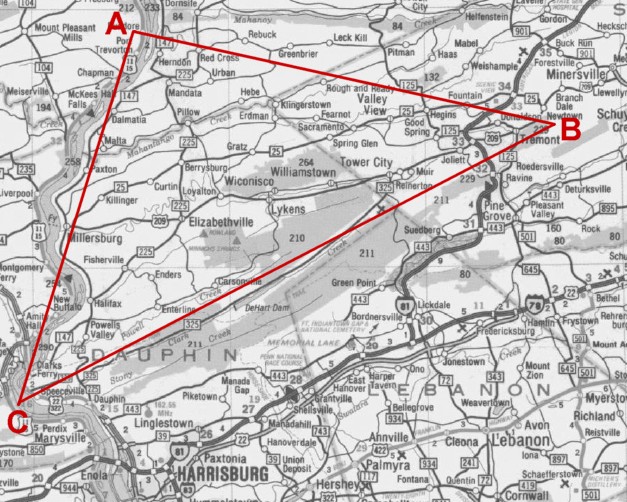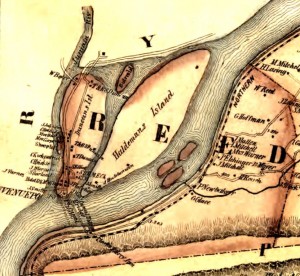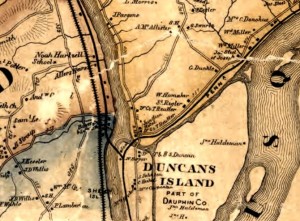Was Confederate Vice President Alexander H. Stephens from Pennsylvania?
Posted By Norman Gasbarro on April 20, 2013
A question was asked by the Perry County Democrat in 1881 as to whether the Confederate Vice President Alexander H. Stephens was from Pennsylvania. Information known at the time was that Stephens had an uncle who had lived in Perry County, Pennsylvania, and it was believed that his father, Andrew B. Stevens was born in Perry County. The Perry County Democrat decided to write to Mr. Stephens to get an answer.
Alexander H. Stephens responded through a Mr. C. P. Culver, since at the time of the request, he was unable to write a response himself. Culver indicated that Alexander H. Stephens was born in Georgia, but that his grandfather Alexander Stephens, who was an Englishman by birth, and a Captain in the Colonial Army during the Revolution, had indeed lived in Perry County before moving to Georgia. It was in Perry County, that the grandfather married the daughter of Andrew Baskins, who operated the ferry over the Susquehanna at the mouth of the Juniata River during the Revolutionary War Thus, Alexander H. Stephens’ paternal grandmother’s roots through the Baskins were more deep in Perry County than were his paternal grandfathers’s.
Mr. Culver also indicated that Alexander H. Stephens was born near Crawfordville, Taliaferro County, Georgia, 11 February 1812. And, that some time after the grandfather had moved to Georgia, one of the sons of Alexander Stephens and Catherine Baskins – James Stephens – moved back to Perry County.
If Alexander H. Stephens had roots in the area where the Juniata River meets the Susquehanna River – which is in the present location of the Clark’s Ferry Bridge- then the roots of the family of the Confederate Vice President are within the area of study of this Civil War Research Project.

The map shown above is of the general geographic area covered by the Civil War Research Project. Clark’s Ferry is located within “Angle C”. Harrisburg, the object of Lee’s invasion of Pennsylvania, is only a few miles to the south of Clark’s Ferry.
The cut of the historic map from 1858, shown above, shows the river islands and the location of the Clarks’s Ferry Bridge from the Dauphin County side. The river islands were then and are now part of Reed Township, Dauphin County.
The two map cuts shown above are from a Perry County map from the Civil War period. Duncan’s Island, part of Dauphin County is clearly shown as is the bridge crossing. This was the area when the Baskins family operated their river ferry at the time of the Revolutionary War. The operator of the ferry, Andrew Baskins, was the great-grandfather of Alexander H. Stephens.
James Stephens, the uncle of Alexander H. Stephens, raised his family in this area where the rivers meet. His grandchildren were still in that area at the time of the Civil War – and possibly fought in the war. It is not known whether Alexander H. Stephens was in communication with his Pennsylvania cousins.
After the Civil War, Alexander H. Stephens was imprisoned at Fort Warren in the Boston Harbor for five months until October 1865. He later served in the U.S. Congress as a Representative from Georgia from 1 December 1873 to his resignation on 4 November 1882, when he was elected Governor of Georgia. He died while Governor of Georgia, 3 March 1883, and was first interred in Oakland Cemetery in Atlanta, Georgia, but later reinterred on his estate, “Liberty Hall,” near Crawfordville, Georgia.
It is not known whether Alexander H. Stephens ever visited Pennsylvania.
—————————–
The map cuts are from the Pennsylvania Archives. The story that first appeared in the Perry County Democrat in 1881 was reprinted in The Perry Review, Volume 25, 2004, pages 54-56.
 ;
;






Comments